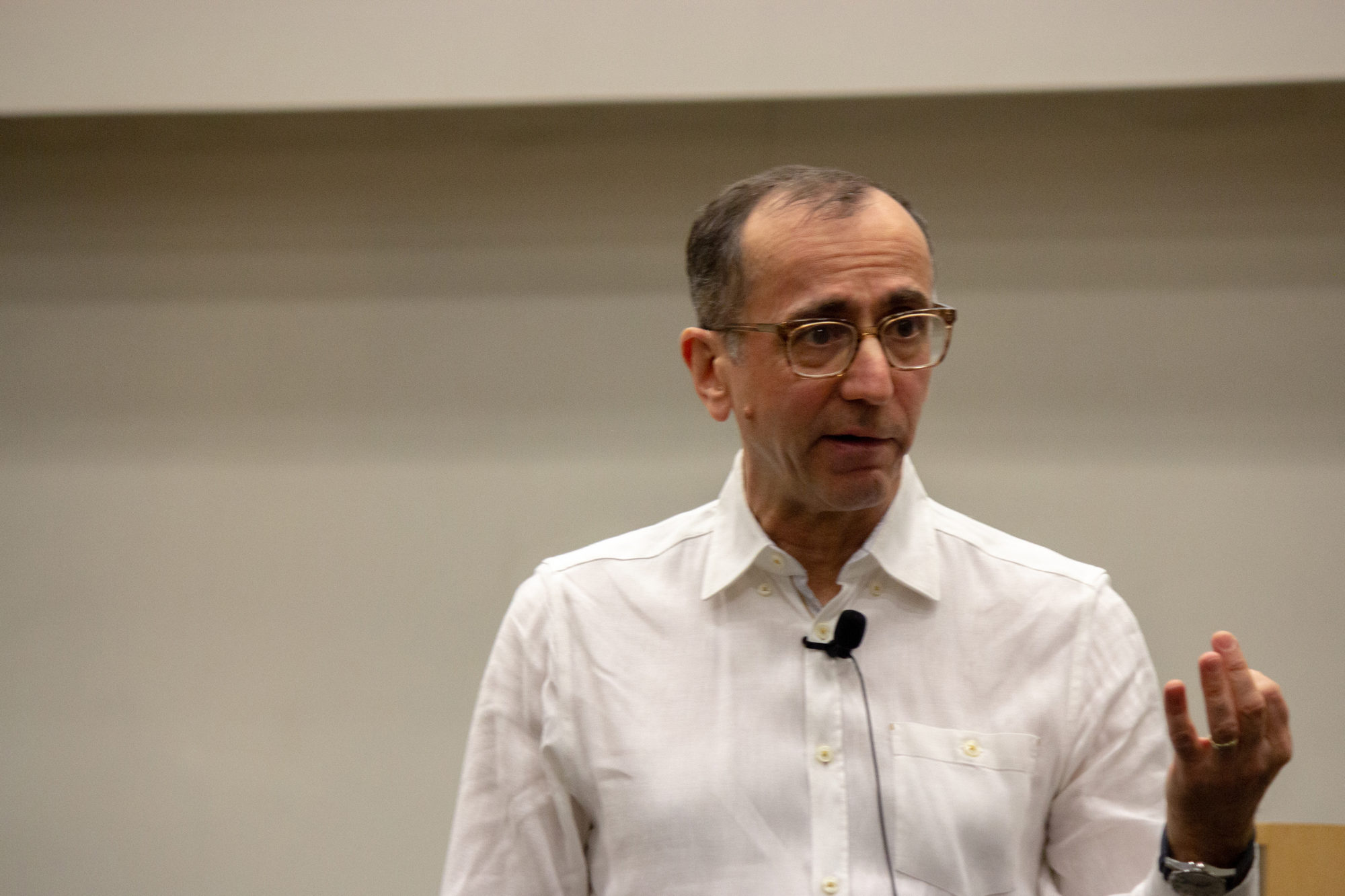
In his 2016 book on visual culture, NYU professor Nicholas Mirzoeff explains his field thusly: “Simply put, the question at stake for visual culture is, then, how to see the world.” Today, the idea of visual culture seems inseparable from culture writ large, and the question of how we see the world and whose perspective we are seeing from is urgent. The problems with what we see in visual culture reveal themselves slowly, as Mirzoeff’s research trajectory shows us. Racist imagery has flourished with the infrastructural support of well-known institutions that are historically white, colonial, and hierarchical.
To illustrate his point, Mirzoeff’s recent lecture at UWM’s Center for 21st Century Studies focused on statues. Statues are inherently symbolic, and have lately become increasingly relevant markers of political tension as activists vie for the removal of specific problematic figures and other public remnants of Jim Crow-era white supremacy. Recent examples include the 2017 removal of the Robert E. Lee Monument from downtown New Orleans, and myriad other removals including a figure of a confederate soldier in North Carolina just last month. Drawing on the Marxian and anti-colonial theories of Stuart Hall and Frantz Fanon, Mirzoeff expands upon Fanon’s idea of “the world of statues,” explaining that if we view whiteness as a statue—in the sense that they are idealized, composite forms of whiteness—we can interrogate the hierarchies that continue to operate within them. His evaluation of the recent political outcry to remove statues and monuments of confederate leaders and other contentious figures across the United States and beyond highlights the exigency of his work in our political climate. His talk ultimately focused on how deep we must delve into history to dismantle racist structures of power.

Statue of Theodore Roosevelt outside the American Museum of Natural History
Listening to Mirzoeff’s talk was like glimpsing an enlightened version of oft-derided films like National Treasure or The DaVinci Code. Rather than national cultural relics shedding light on the altruistic and ingenious histories of mankind, however, the statues at the center of Mirzoeff’s talk reveal the ideological ugliness embedded within them. His critique of public monuments like the statue of Theodore Roosevelt outside the American Museum of Natural History show how far we still have to go. Though the removal of monuments has largely been focused on former confederate states, Mirzoeff shows us that white supremacy is inherent to all statues in the United States. Even historically northern, progressive regions have a problem with statues. His work unearths the visual substantiation of eugenics in statues like this one that stand among us everywhere—disturbing reminders, for those looking closely, of the colonial, patriarchal, and white supremacist ideology they support. Rather than merely representing white supremacist attitudes, Mirzoeff insists that their very substance is white supremacy, and that they cannot exist apart from it. This particular statue, in which Roosevelt sits on a horse, high above the Native American and African American figures on either side of him, has been the target of intense critique in the past few years. With around five million visitors per year, and infinitely more passersby, it is clear why such a statue has been targeted by groups such as the Monument Removal Brigade. They explain of their protest, which included throwing red paint on the statue’s base: “Now the statue is bleeding. We did not make it bleed. It is bloody at its very foundation.”
Mirzoeff argues with clarity that the racial hatred we have seen erupting with increasing intensity in the United States and Europe is not random, but rooted in long-held racist beliefs and their support by public institutions. The archives of our most well-known museums contain myriad examples of offensive collections saved in the name of “research.” One such example are the bones of Native Americans collected by anthropologists, many of which are still undergoing the slow process of repatriation. Another powerful example of an object held by the British museum included a statue taken from Rapa Nui, which indigenous islanders are demanding be returned. Digital archives like Eurodac, the database of the fingerprints belonging to asylum-seekers entering the E.U., continues to police refugees, treating them like intruders in their new countries. Mirzoeff deftly guides us through a visual history rife with conflict, while making the stakes clear—archives continue to structure white supremacist ideology as long as they collect objects and data that are used to profile people. Institutionalized racism has been spreading since long before the speed and visibility the digital age has provided it, and serious action on the part of institutions to address these ills is long past due. I believe Mirzoeff’s research is invaluable in its commitment to dismantling the colonial and white supremacist structures of power insidiously propagating in our public institutions.
Statues are being removed one by one. But where do they go? The two aforementioned statues removed in New Orleans and North Carolina were both moved to private cemeteries. Though removing them from public spaces is a start, their migration to cemeteries is hardly reassuring. As an audience member pointed out after the talk, whiteness has yet to fracture. It seems fitting that the statues would be less threatening among graves—but the graveyard is not where ideology goes to die. For the time being, they are revenants. They may stand still, but the damage they continue to cause is a constantly moving target.
Is there a published version of the talk available?
Hi Penelope,
You can find a recording of the entire talk here: https://uwm.edu/c21/event/lecture-nicholas-mirzoeff/
Hope you enjoy!